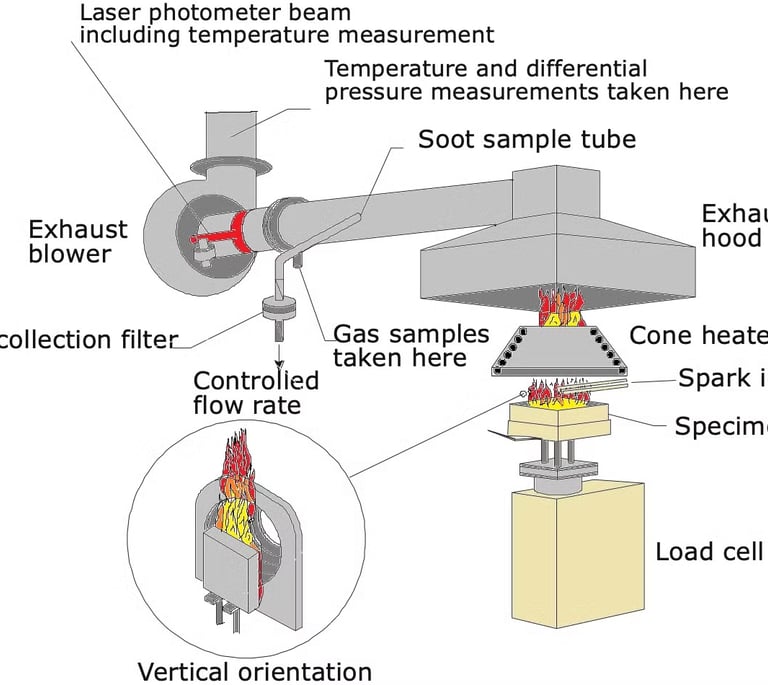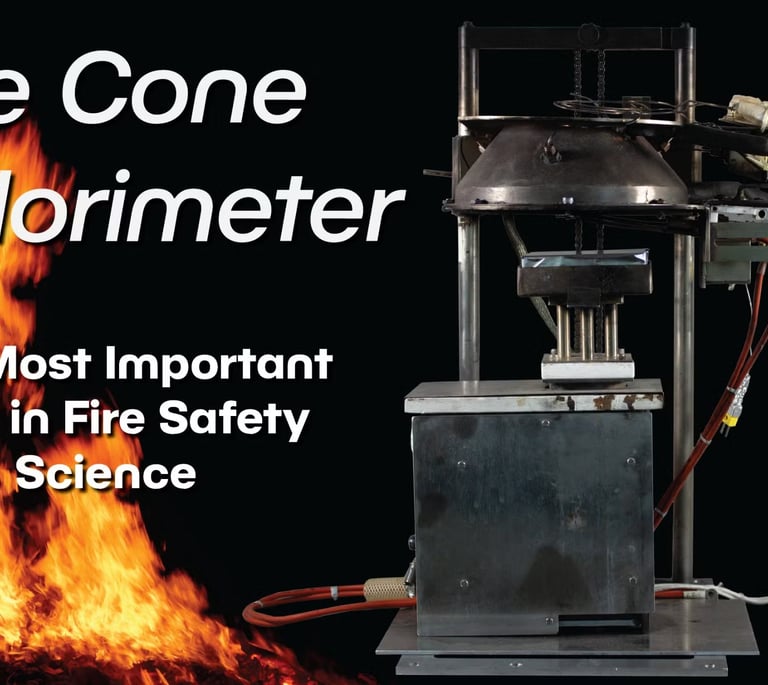The Ultimate Guide to Fire Safety Testing: Cutting-Edge Equipment and Methods You Need to Know
LEON MACHINERY
1/10/20255 min read


When it comes to fire safety, one size doesn’t fit all. Whether you’re testing cables, furniture, or even entire building systems, the methods and equipment used to measure fire resistance and safety are as varied as the materials themselves. Fire testing equipment isn’t just about passing tests—it’s about ensuring that your product, system, or structure can withstand the extreme conditions of a fire. This comprehensive guide dives deep into the most essential fire safety testing equipment and methods, from calorimeters to smoke density chambers, offering insights into what makes each piece of equipment unique.
Understanding the Core Fire Safety Testing Equipment
The world of fire safety testing is vast and technical. But let’s break it down. Key fire safety testing equipment includes devices used to measure the rate of heat release, smoke production, flame spread, and toxicity—critical factors that determine how a material reacts in a fire. Without these tests, manufacturers and engineers would be left in the dark about the true fire safety performance of their products. So, let’s start by examining some of the most essential equipment.
iCone Calorimeters: Precision in Measuring Heat Release
When it comes to calorimetry, the iCone²⁺ Calorimeter stands out as an essential tool in the fire safety arsenal. Calorimeters measure the heat released during combustion, which directly correlates with the intensity of a fire. The iCone Mini and iCone Classic are also invaluable for smaller-scale or less demanding tests, offering the same high accuracy as their larger counterparts. These tools are critical for assessing the fire behavior of materials, allowing engineers to determine how much energy is released during combustion—a key factor in understanding fire development.
Smoke Density Chambers: Measuring Toxicity and Visibility
The NBS Smoke Density Chamber and the ISO 5659 Smoke Density Chamber are some of the most critical instruments used to measure smoke production in a fire scenario. Why is smoke measurement so important? In a fire, smoke is often the leading cause of injury or death, as it impairs visibility and can carry toxic gases. These chambers simulate real-world fire conditions, helping to assess how much smoke a material emits when exposed to flame.
In parallel, the LED Smoke Density Photometric System is an advanced tool that helps measure the optical density of smoke, providing a more detailed understanding of its potential danger. These systems offer precise, quantifiable data on smoke production, which is invaluable when selecting materials for any building or infrastructure project.
Fire Propagation: How Quickly Does Fire Spread?
One of the most crucial factors in fire safety testing is understanding how fast a fire can spread across a material or structure. Fire Propagation Apparatus tests this by assessing how quickly flames travel across the surface of materials. The OSU Rate of Heat Release Apparatus is another key piece of equipment for measuring fire spread and determining how much heat is generated in the process.
Testing how a fire spreads across materials helps engineers understand the risks of fire propagation in real-world situations. If a material is prone to rapid flame spread, it might not be suitable for use in public spaces or buildings. Testing these materials with the right equipment can help avoid potential disasters.
Testing Furniture and Mattresses: A Specialized Approach
Furniture and mattresses often present unique challenges when it comes to fire safety. The Furniture Calorimeter and Large Scale Mattress Fire Test are designed specifically for these materials. They simulate the burning conditions of soft furnishings, assessing how quickly flames spread across these materials and how much heat is released. These tests are essential for ensuring that upholstered furniture and bedding materials meet fire safety standards, particularly in industries like hospitality, where fire risks must be carefully mitigated.
The Importance of Non-Combustibility and Flame Resistance Tests
Understanding how materials behave when exposed to flames is critical to designing safer products. Non-combustibility Tests (such as the EN ISO 1182 test) are essential in determining whether materials will ignite and burn under specific conditions. This is especially important in construction, where materials need to meet strict fire safety standards to ensure building integrity during a fire.
Another essential flame resistance test is the Horizontal/Vertical Flame Chamber, used to determine how well materials resist fire spread when exposed to an open flame. The EN 60332 test evaluates the behavior of cables in fire situations, ensuring that electrical wiring does not contribute to the spread of fire through buildings.
Oxygen Index: The Role of Oxygen in Fire Safety
The Oxygen Index is a critical test that determines the minimum concentration of oxygen needed to support the combustion of a material. Materials with a high oxygen index are generally more resistant to catching fire, which makes this test crucial for materials used in high-risk environments. The Temperature Oxygen Index Apparatus provides additional insight by offering a temperature-based analysis of the oxygen levels required for combustion.
Advanced Fire Testing Methods for Complex Materials
Some materials, particularly those used in cutting-edge technologies, require more specialized fire testing methods. Thermal Acoustic Insulation Flame Propagation Apparatus and the Cone Corrosimeter are designed to assess how heat affects materials in complex environments, like inside battery energy storage systems or high-performance insulation. These tests are particularly important in ensuring that modern, high-tech materials don’t contribute to fire risks in innovative applications.
Toxicity and Combustion Toxicity Testing
Fire toxicity is another essential aspect of fire safety testing. The FMVSS 302 test, for example, evaluates how materials used in motor vehicles behave in a fire, including how much toxic smoke they emit. The Toxicity Test Attachment ABD0031 and the Combustion Toxicity Test Apparatus measure the gases released during combustion, providing data on potential health risks to individuals exposed to fire conditions.
The NES 713 Toxicity Test and Corrosion Test Apparatus also offer valuable insights into the long-term effects of smoke inhalation, an often-overlooked hazard in fire safety. Toxic gases can cause irreparable harm long after the fire has been extinguished, which is why these tests are so critical.
Custom Fire Testing for Unique Needs
No two products are the same. And when you’re designing or testing materials for fire safety, you need flexibility. That’s where customized fire testing solutions come in. Large Scale Tests, such as the Room Corner Test or Radiant Panel Flame Spread Apparatus, are used for more comprehensive fire testing. These tests are often used to assess entire systems, like building facades, to understand how fire will behave in a real-world setting.
For highly specialized tests, like those for battery energy storage systems or photovoltaic panels, tools like the Thermal Runaway Fire Propagation Calorimeter are necessary. These specialized devices help ensure that the materials used in these advanced technologies won’t catch fire under extreme conditions.
Conclusion: A Comprehensive Approach to Fire Safety
Fire safety testing is a complex, technical field, but it is absolutely essential for ensuring the safety of both people and property. From calorimeters and smoke density chambers to advanced toxicity and flame spread tests, there’s no shortage of equipment available to assess the fire safety of materials. Whether you’re designing a building, testing a new product, or working in a specialized field like automotive or energy storage, the right fire safety tests can make all the difference.
Investing in quality fire safety testing equipment not only helps comply with legal and safety standards but also ensures that the products you bring to market are safe, reliable, and effective. So, as fire safety standards continue to evolve, staying informed about the latest testing methods and equipment is critical.


